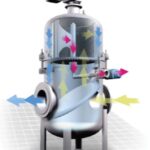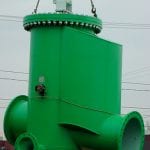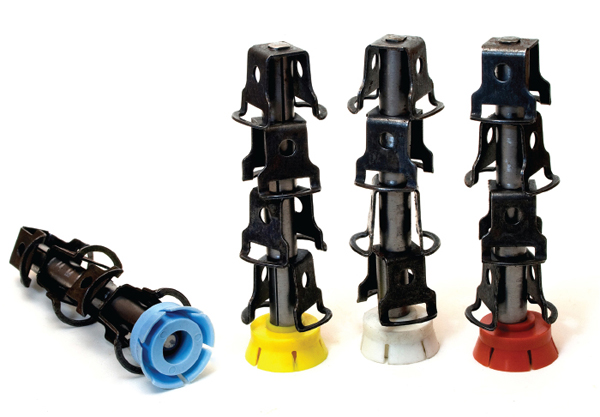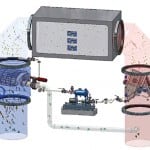Traditional plants are turning to automatic self-cleaning strainers to provide more reliable cooling, reduce required maintenance, and improve uptime.
With greater intrusion into the market from renewables, traditional power generation plants are under pressure to produce more efficiently and cost-effectively. Consequently, more than ever, there is no room for any unscheduled downtime.
While not the focus of power plants, one source of unscheduled downtime can come from cooling or energy production problems due to water containing too high a concentration of suspended solids. This leads to filter fouling and scale buildup, which decreases plant efficiency and increases required maintenance as well as any resulting downtime.
In power plant cooling towers, water filtration improves cooling efficiency while reducing fouling and plugging. It does so by filtering out dust/solids and by reducing scale in connected cooling water systems. In process equipment, water filtration can remove suspended scale and debris from heat exchangers and cooling systems to prevent fouling and clogging of equipment and nozzles. When contaminants are filtered from water before reaching spray nozzles, this prevents fouling, abrasion, nozzle wear, and keeps the nozzles debris-free. To further minimize maintenance and improve plant efficiency, fine water filtration can even remove microscopic and suspended solids as well as trace contaminants when treating water used for cooling and other processes.
In order to enhance their market competitiveness, a growing number of power industry professionals are now ensuring more reliable electricity production with superior quality water by turning to low maintenance, multi-element, automatic self-cleaning strainers. This approach provides a more-effective defense against power plant equipment damage, downtime, and inefficiency.
Historically, the power generation industry has utilized certain types of sand or media filters, centrifugal separators, and basket-type strainers for filtration. However, in many cases these have a number of shortcomings, including susceptibility to fouling and damage, and can require frequent cleaning, maintenance, and early replacement.
To overcome these problems, many power industry professionals now rely on multi-element, automatic self-cleaning strainers (Figure 1). These provide an alternative to sand and media filters, centrifugal separators, and basket-type strainers. The multi-element, automatic self-cleaning strainers can provide continuous removal of suspended solids. When utilized for power industry water filtration, the strainers can reliably filter out sand, silt, and other suspended solids as small as 30 microns in size.
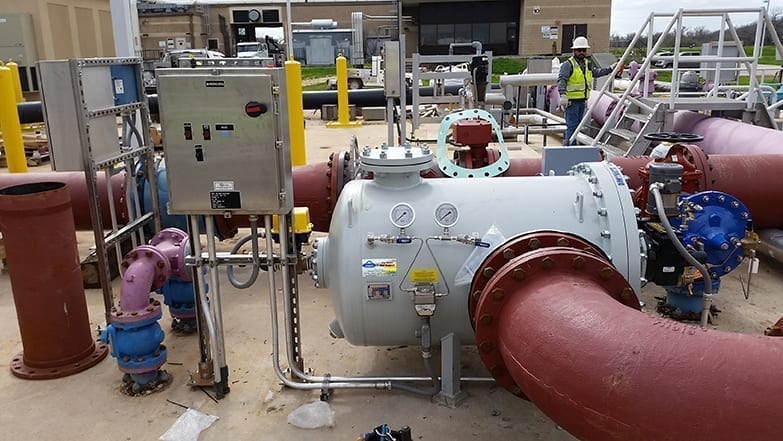
A significant feature of the multi-element design is in the engineering of the backwash mechanism, which enhances reliability. With many traditional strainers, the backwash mechanism comes into direct contact with the straining media. This can be problematic, as large, oversized solids often encountered with raw water can become lodged between the straining media and the backwash assembly. The result is straining media damage and/or rupture that can compromise filtration and even other equipment, hindering production. Instead, the multi-element design utilizes a tube sheet to separate the straining media from the backwash mechanism. This prevents the backwash mechanism from coming into contact with the media and damaging the elements.
Power industry operators often also need to consider how to best reduce filter fouling and required maintenance. Traditional strainers can become clogged quickly due to limitations in straining area. When that occurs, cleaning, media replacement, or backwashing is necessary, which adversely affects productivity as well as maintenance costs. In this regard, the multi-element design provides three to four times the surface area of traditional strainers and pre-filters. This translates directly into less-frequent backwashing so less water goes to waste, less power is consumed, and less maintenance is required.
While traditional media found in large basket designs can lead to collapse and failure under differential pressures as low as 35 psid, the smaller diameter of the media used in the multi-tube strainers enables the strainer to safely handle differential pressures in excess of 150 psid. This protects power production even during high differential pressure events, which could otherwise result in significant downtime.
As an additional protective measure, the strainer drive system includes a shear key, which sacrifices itself in the presence of excessively large debris. So, if large debris were to cause mechanical problems within the strainer, the shear key breaks, protecting the unit’s rotating assembly, motor, and gearbox by halting the drive shaft rotation. Filtration continues, but operators notice an increase in differential pressure as the backwash cycle is interrupted, and can act to clear the obstruction and replace the shear key.
For power industry environments exposed to highly corrosive elements, upgrade options to materials such as super duplex and duplex stainless steels, titanium, Monel, Inconel, and Hastelloy provide resistance to corrosion and corrosion-related damage.
When considering technology for power industry filtration systems, automatic multi-element, self-cleaning filters are an increasingly popular choice and a reliable, cost-effective solution.
—Glenn Mountain is general manager of R.P. Adams, a Buffalo, New York-based manufacturer of municipal and industrial liquid filtration and heat exchange equipment since 1937. R.P. Adams first introduced and patented multi-element, self-cleaning pre-treatment filter technology in the 1960s and has over 10,000 installations worldwide today (www.rpadams.com).






